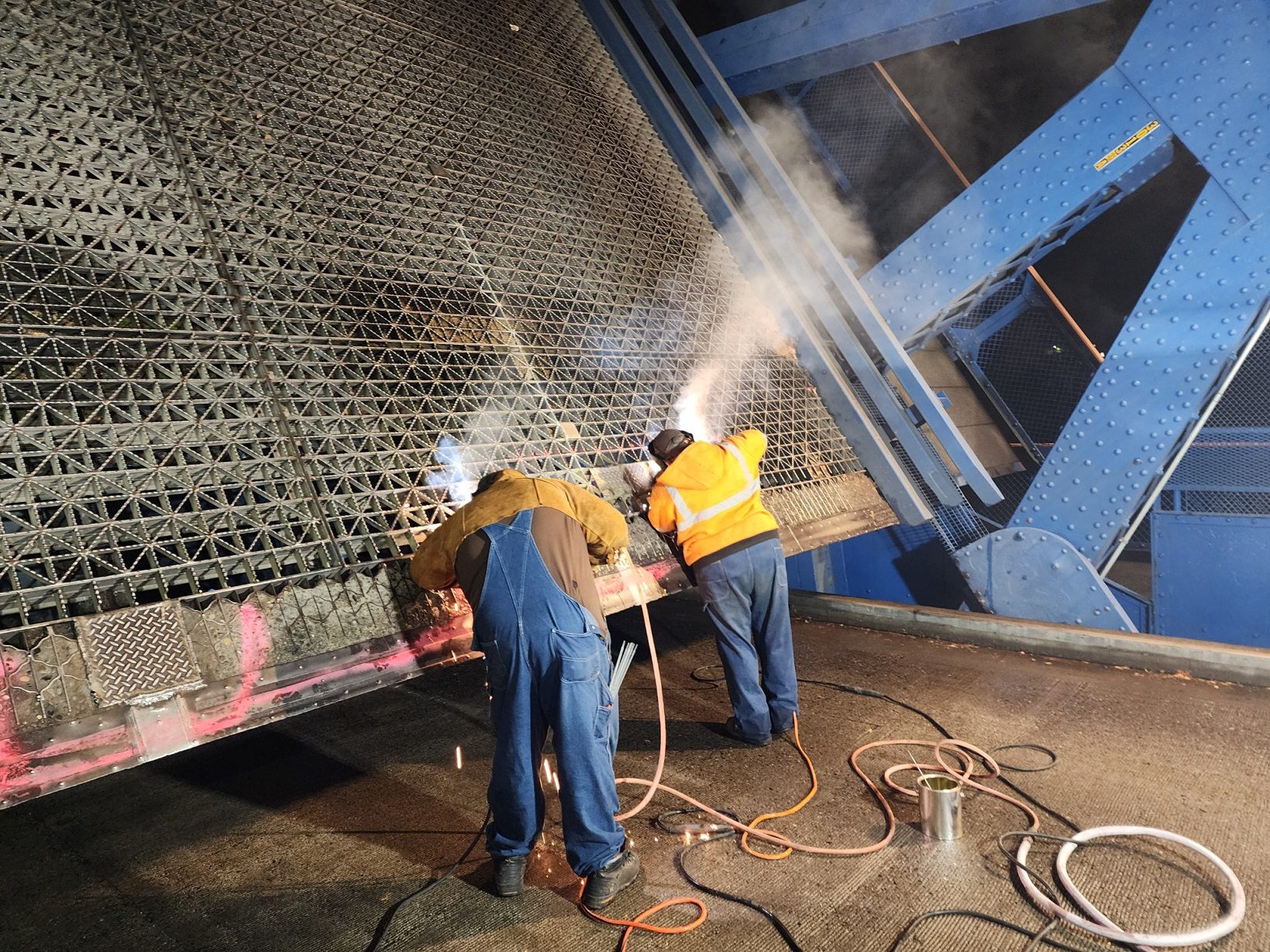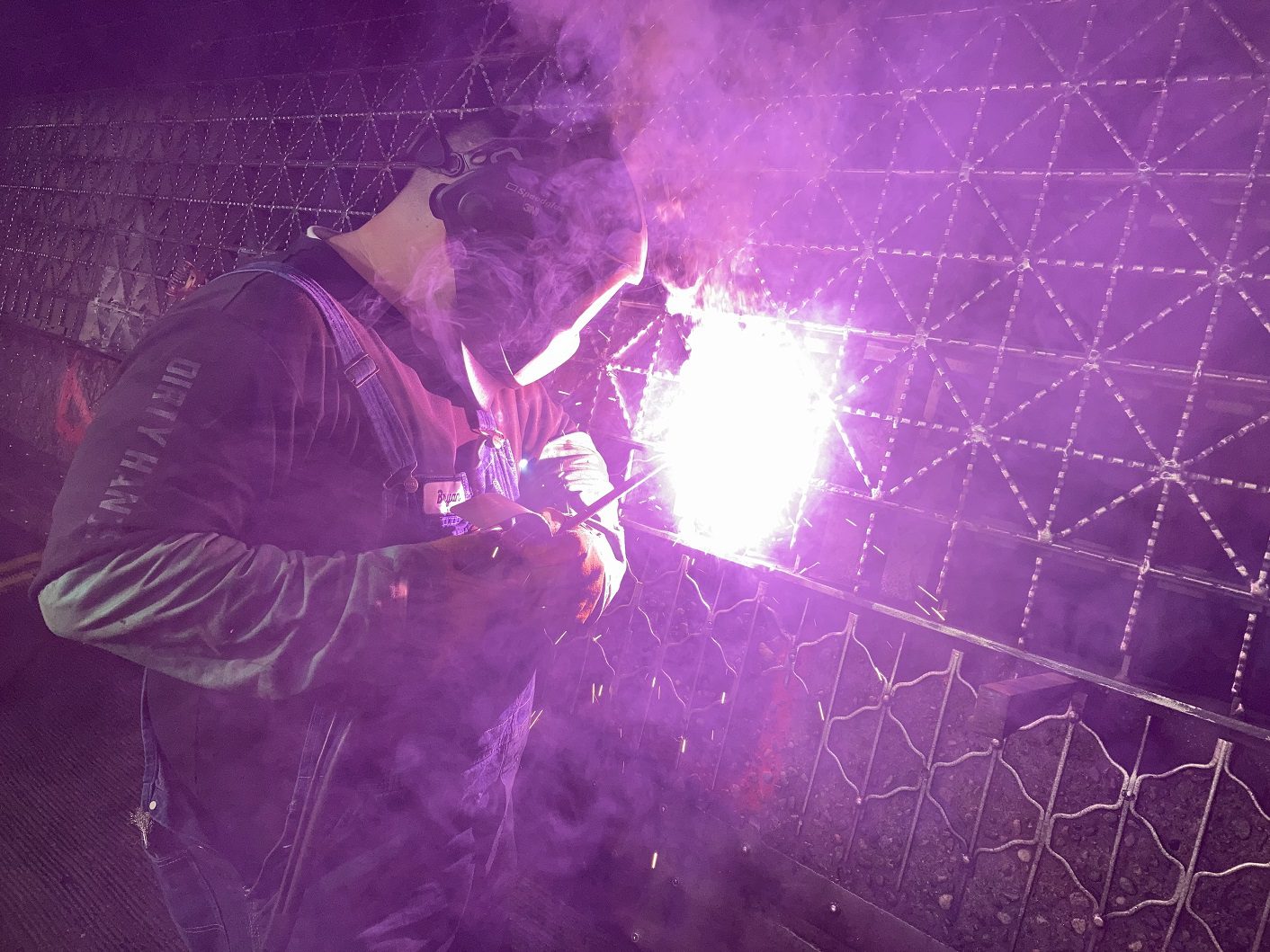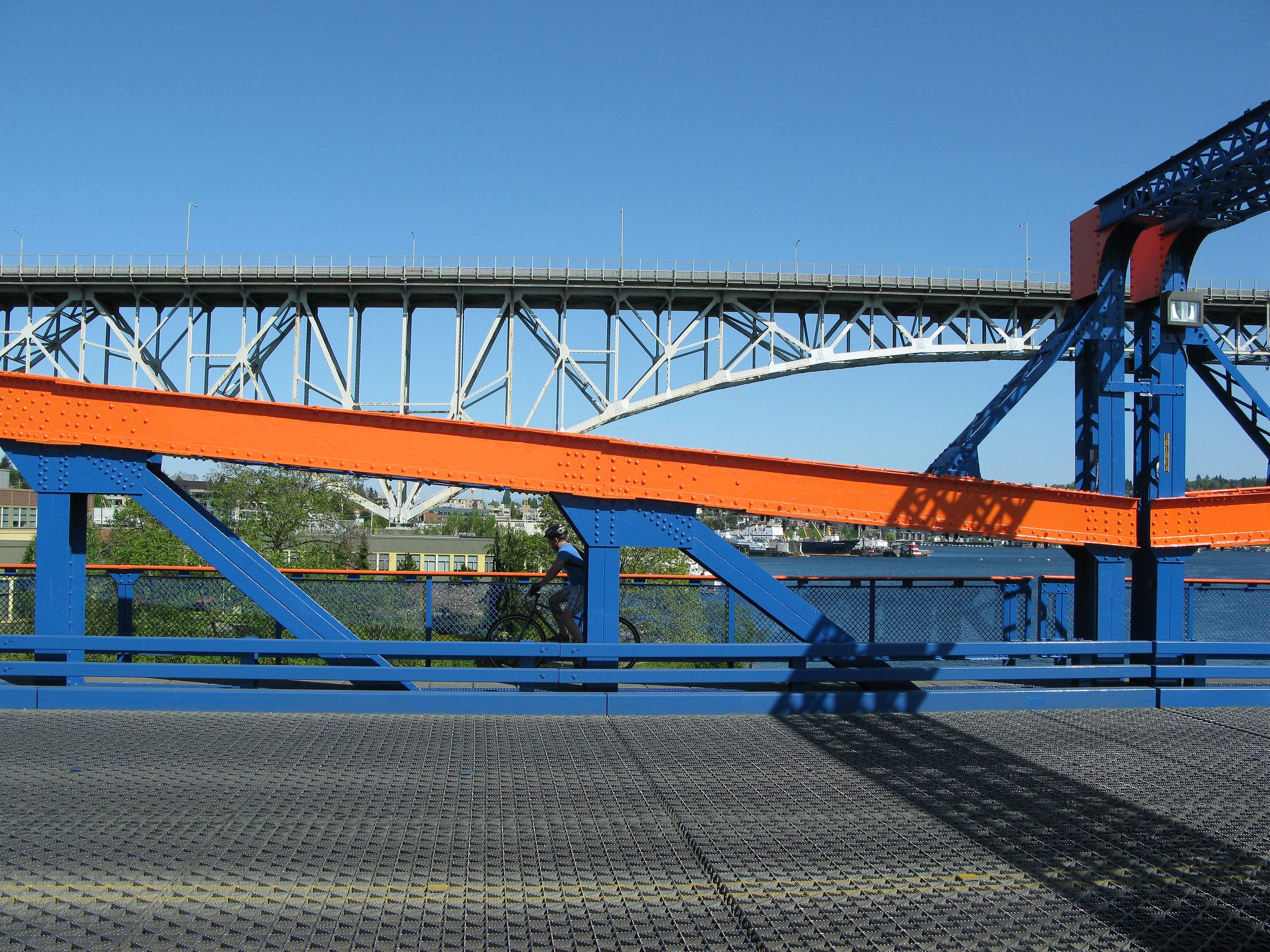 Our crew members recently worked hard overnight to conduct welding on the Fremont Bridge's deck. Photo: SDOT.
Our crew members recently worked hard overnight to conduct welding on the Fremont Bridge's deck. Photo: SDOT. Editor’s Note (Oct. 25): Our crews completed significant work during the first overnight closure (October 21-22), but need another overnight closure to complete the planned bridge deck maintenance work. The next closure is scheduled from 11:59 p.m. Friday, October 28 to 6:00 a.m. Saturday, October 29.
Details at-a-glance:
- The Fremont Bridge will be closed overnight from 11:59 p.m. Friday, October 28 to 6:00 a.m. Saturday, October 29.
- During this time, our crews will be completing nighttime maintenance work to weld and repair sections of the bridge’s metal deck grating.
- The bridge will be closed to vehicles all night. However, we plan to allow people walking, biking, and rolling to cross the bridge for 15 minutes at 1:00, 2:00, 3:00, and 4:00 a.m.
- The nearest other bridges across the Ship Canal are the Aurora Bridge (SR 99), Interstate 5, Ballard Bridge, or University Bridge.
- King County Metro bus service is expected to be rerouted around the closure, and riders are encouraged to plan extra travel time. Riders also are encouraged to sign up to receive transit alerts via text or email to learn about temporary route changes. Information also will be posted online closer to the closure date on Metro’s Service Advisories page.
- The work is weather-dependent.
- You can follow us on Twitter for the latest traveler information: @sdottraffic.
Our crews will be conducting preventative maintenance from 11:59 p.m. on Friday, October 28 until 6 a.m. on Saturday morning, October 29 to repair the Fremont Bridge’s metal bridge deck. The drawbridge will be raised overnight so that crews can repair sections of the metal grating of the bridge deck. This work is weather-dependent.
The Fremont Bridge is over a century old and is believed to be the most frequently raised drawbridge in America and one of the busiest drawbridges in the world. Over time, the fasteners which hold the metal bridge deck in place have worn down and loosened, causing the metal grating to shift when a vehicle drives over it. It is important to repair and maintain the bridge deck in order to prevent the metal grates from moving around and damaging other bridge components.

Crew members will be lifted as high as 100 feet above the water to complete the welding work. This will be done using a truck with a movable arm to reach the sections that need to be repaired. The process will involve super-heating the metal bridge deck with a welding torch to burn off layers of accumulated dirt, and then repairing the attachments that hold the metal grating in place.
Performing this work while the bridge is raised is the most efficient way to complete the repairs. This gives crews the best access to the underside of the bridge so that they can finish the welding work more quickly and minimize the disruption for the traveling public.

Maintaining our bridges and other City infrastructure:
We invest in ongoing maintenance of all the 1,500 roadway structures we own, including bridges, underground support walls, stairways, retaining walls, and other structures. Taking care of our aging bridges is important and we’re committed to continuing our comprehensive and proactive bridge asset preservation program that maximizes the life of our critical infrastructure.
Our crews run regular tests, conduct routine safety checks, and complete proactive maintenance work to ensure that these important structures and transportation routes continue to operate safely and last as long as possible. This saves us—and taxpayers—more money in the long run and helps maximize our existing investments.
Specifically, our mechanical and electrical teams run tests each month on our drawbridges and perform balance checks when weight (like paint or additional parts) is added or removed from the bridges. Crews conduct routine inspections of each bridge in accordance with federal regulations. This way we can find any issues quickly, which helps prevent bigger and more costly repairs later. The team is also on call 24/7 with an electrician, mechanic, engineer, and supervisor ready to assist in case of an emergency.